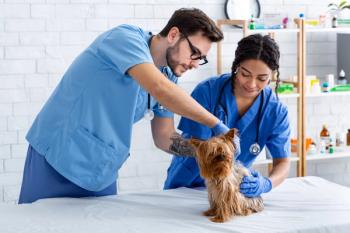
Team member roles identified in new 2015 AAHA/AAFP Pain Management Guidelines for Dogs and Cats
Pain management responsibilities for veterinarians
> Assess pain in every patient regardless of appointment type (e.g., wellness, sick, follow up)
> Develop standard operating procedures for the practice to prevent pain, including the following:
• Weight optimization and prevention of dental disease
• Handling and hospitalization to prevent fear and pain
• PLATTER (
> Provide staff education on:
• Effective client communication and education
• Preventive pain strategies
• Recognition and assessment of pain
• Drug interactions and adverse effects
Pain management responsibilities for veterinary technicians
> Obtain medication history
> Anticipate painful procedures
> Recognize signs of pain and alert veterinarian
> Treat as directed by a veterinarian and update records
> Assess postoperative patients and record pain score
> Assess chronic-pain patients and record pain score
> Maintain effective client communication and education
Pain management responsibilities for patient-care personnel
> Prior to veterinary examination:
• Note any possible causes of pain
• Note any behavioral changes
> During the examination:
• Proper handling
• Other stress/anxiety-relieving techniques
> Following the examination:
• Monitor patient's behavior
• Contact client about questions or concerns
• Set follow-up appointment
> Housing should be stress/anxiety-relieving
The guidelines also point to the importance of having a patient advocate for each hospitalized animal to enable accurate and individualized evaluation of the patient and ensure successful treatment.
Newsletter
From exam room tips to practice management insights, get trusted veterinary news delivered straight to your inbox—subscribe to dvm360.




